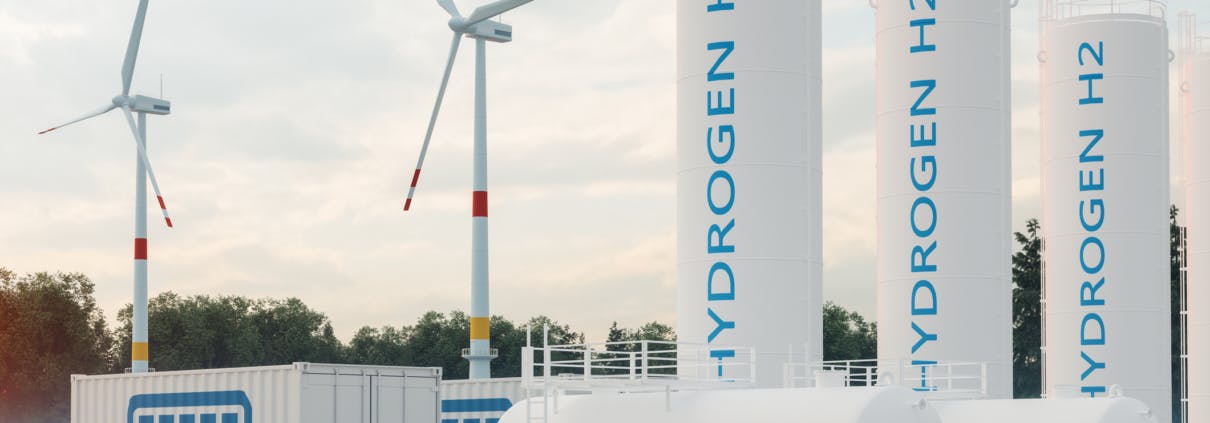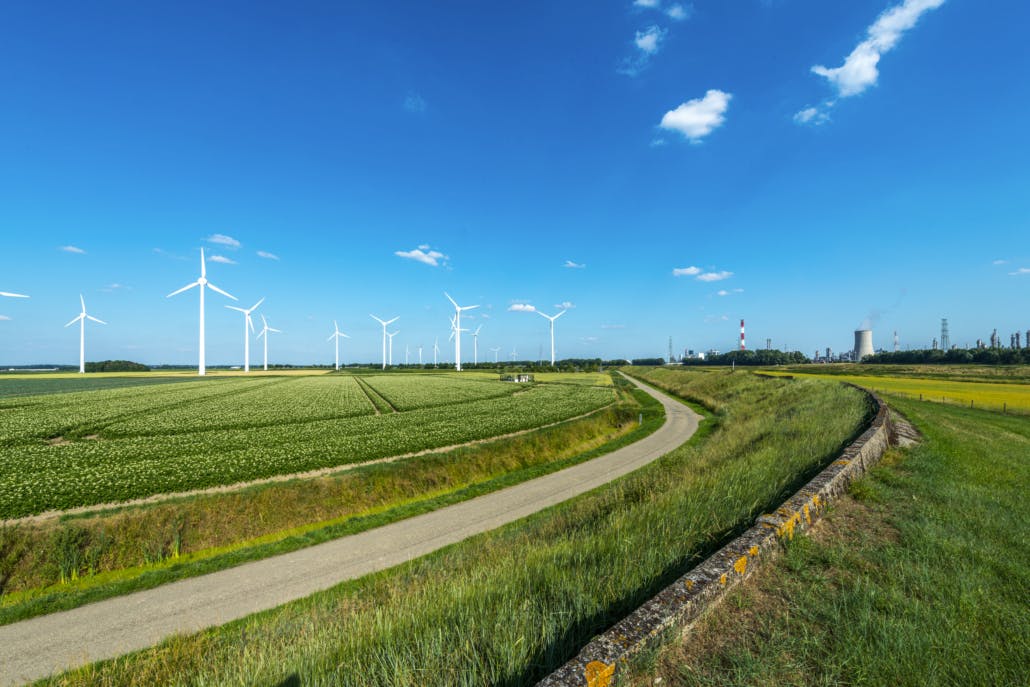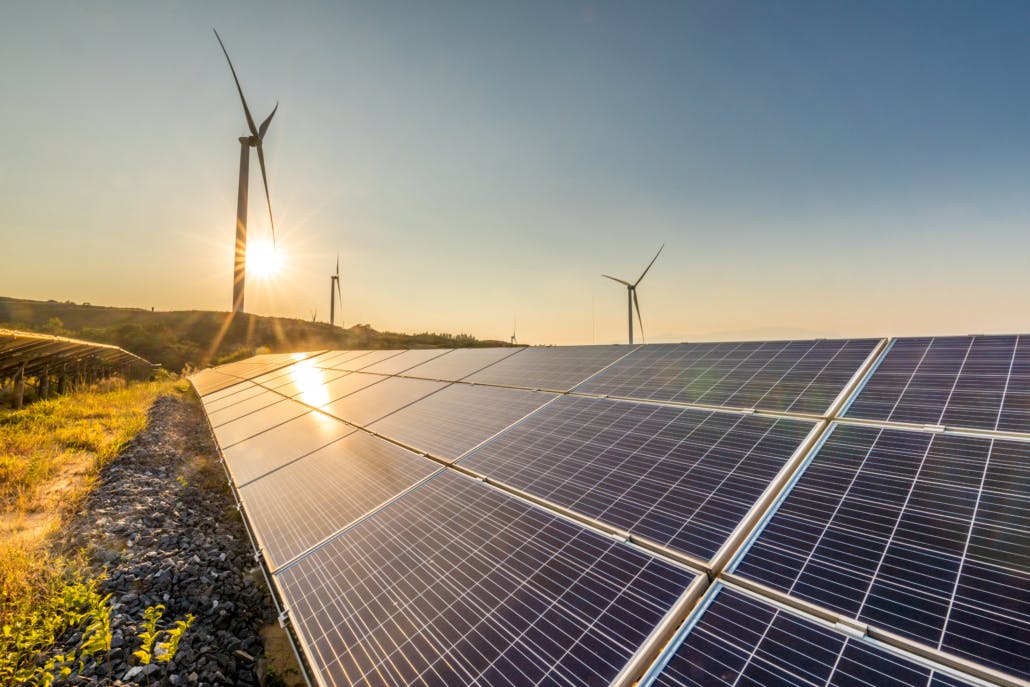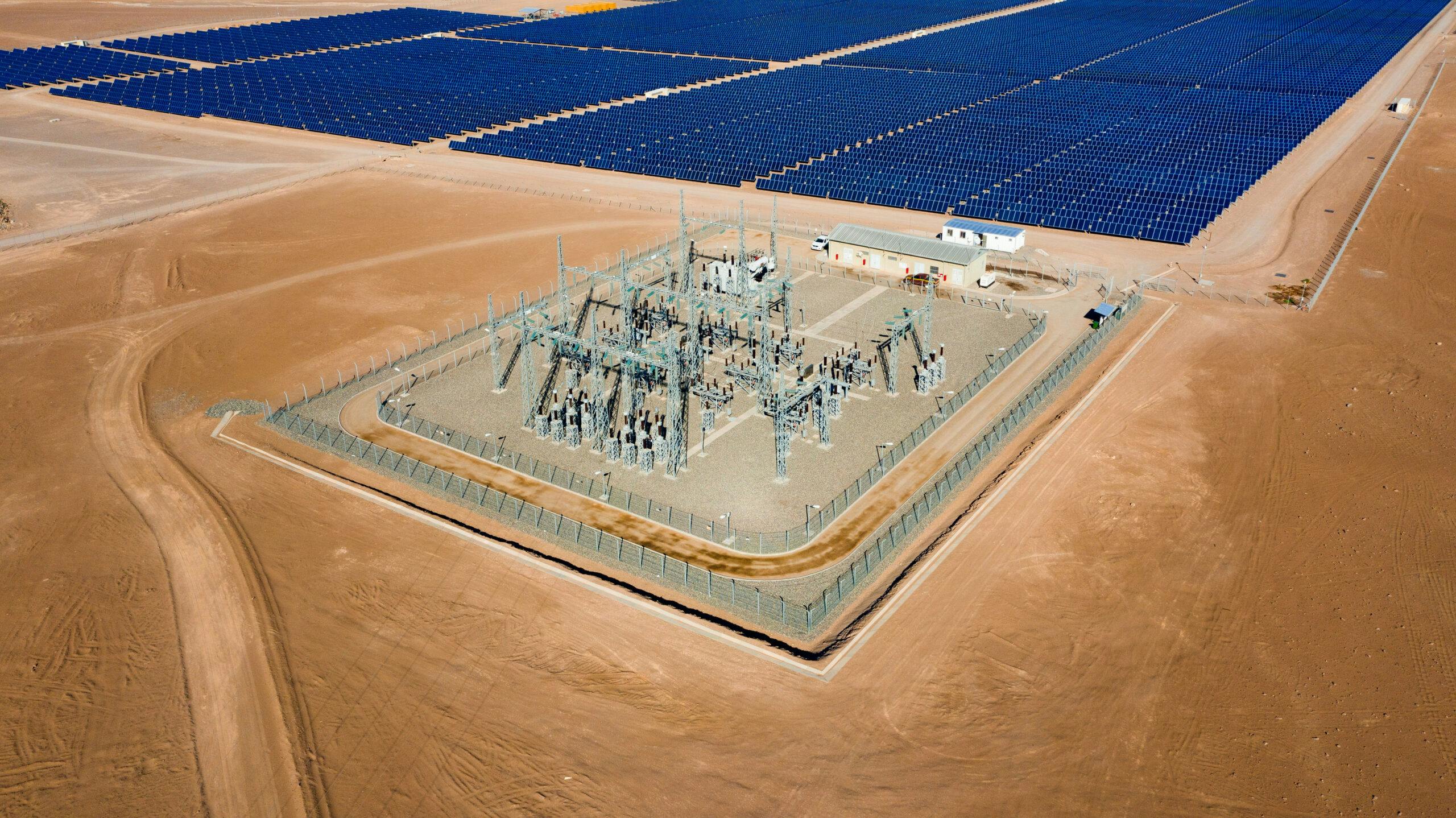GREEN HYDROGEN: TOWARDS NET ZERO

Green hydrogen is rapidly emerging as a key component in transitioning to a sustainable energy future. Produced from renewable energy sources, this clean-burning fuel offers a range of applications in industries from transport to electricity generation. And, unlike hydrogen produced from fossil fuels, green hydrogen does not emit carbon dioxide, making it a critical tool in the fight against climate change. In this deep dive, we take a look at the critical role that green hydrogen can play in complementing existing renewable energy offerings amid the push toward net zero.
The many uses of hydrogen
The energy revolution is in full swing, and the world is turning towards renewable energy sources to power the future. At Atlas Renewable Energy, we’ve seen first-hand how large industrial energy users in sectors like chemicals and mining are making the switch to solar and wind power to run their operations – slashing carbon emissions while helping to drive a more renewable electricity grid.
However, there are still significant challenges in decarbonizing the global economy completely. Aviation, shipping, long-distance trucking, and heavy industries like concrete and steel manufacturing require high energy density fuel or intense heat, which are difficult to electrify. Hydrogen fuel cells, which have been used to send rockets into space since the 1950s, could be a solution for the heavy-duty transport industry, while hydrogen-fueled planes could reduce the climate impact of flying by up to 75%.
But it’s not just in replacing solid fuel where hydrogen can play a leading role in cleaning up the global economy. It can also store energy, acting as a buffer for renewable energy sources like wind and solar. These sources are subject to fluctuations, producing energy only when the wind blows or the sun shines; hence energy storage solutions are crucial for their widespread deployment. While battery technology has been rapidly developing, it still has some way to go before it can provide sufficient backup for a fully renewable grid. Green hydrogen offers a reliable and scalable solution for energy storage and could be a game-changer for the sustainable energy future.
From Gray to Blue to Green: a look at the different types of Hydrogen
Hydrogen, the most abundant element in the universe, is the key to unlocking a greener future. But to truly harness its potential, we must first understand how hydrogen is produced and its impact on the environment.
Because hydrogen atoms do not exist in nature by themselves, they must be decoupled from the other elements they attach to. The majority of hydrogen currently used is created through a process called steam methane reforming, which uses fossil fuels, such as propane, gasoline, and coal, to create high-temperature steam that reacts with methane to produce hydrogen, carbon monoxide, and carbon dioxide. While this method may seem convenient, it comes at a steep cost to the environment – the resulting gray hydrogen generates 830 million metric tons of CO2 emissions each year.
But there’s a cleaner alternative. Blue hydrogen, produced through the same process but with the capture and storage of CO2 emissions, offers a step towards reducing the carbon footprint of hydrogen production.
And then there’s green hydrogen, the cleanest form of all, which is created through the electrolysis of water using renewable energy sources like solar or wind power. The result is completely green hydrogen, with no emissions and only water as a byproduct. Green hydrogen has the potential to revolutionize manufacturing, transportation, and beyond as we strive toward a cleaner, more sustainable world.
Green hydrogen around the world
The Inflation Reduction Act, signed into law by US President Joe Biden in August last year, is widely seen as a turning point for green hydrogen production. Under the law, green hydrogen plants in 2023 can receive a production tax credit of 2.6 cents per kWh and up to $3 per kg of hydrogen, respectively, for the first 10 years of operation, thereby slashing production costs and bolstering the US Department of Energy’s plans to produce 10 million metric tons of clean hydrogen by 2030, which include US$8bn for the development of regional hydrogen hubs.
In Latin America, numerous countries are already working to take advantage of their high renewable energy potential to put national hydrogen roadmaps in place. Chile’s strategy, launched in 2020, sets out specific goals such as being the country with the cheapest green hydrogen on the planet, at less than U$S1.50 per kg by 2030, while Colombia’s roadmap, published in 2021, establishes tax incentives for both green hydrogen projects and their so-called “blue” counterparts – those produced using fossil fuels but with emissions capture – to attract new investments.
Green hydrogen is also proving to be a game-changer in Europe’s quest to reach net-zero carbon emissions by 2050, with the European Commission placing the fuel at the heart of its plan. As part of the European Union hydrogen strategy, which was implemented at the beginning of 2022, all new power plants must be equipped with turbines that are ready to run on a hydrogen-natural gas blend, with plans to certify these turbines for 100% hydrogen use by 2030. The push toward green hydrogen is not limited to power plants. The continent’s steelmakers are also exploring its potential as a substitute for coal in their furnaces, demonstrating that green hydrogen is a practical and scalable solution for reducing carbon emissions across a range of industries.
Green hydrogen and renewables: a perfect partnership
With the growth of solar and wind power, the potential for producing and storing clean hydrogen will continue to expand. Moreover, hydrogen can store surplus renewable energy that is generated when supply exceeds demand, providing a stable source of clean energy for the future. As such, the marriage of green hydrogen and renewable energy is made in sustainable heaven, enabling us to meet tomorrow’s energy demands while safeguarding the planet.
For green hydrogen producers and consumers, the time to act is now: acquiring renewable energy will pave the way to accelerate both production and adoption.
In partnership with companies like Atlas Renewable Energy, at the forefront of the energy transition movement, hydrogen producers have an unparalleled opportunity to lead the charge toward a sustainable energy future. We’re excited about the possibilities.
In partnership with Castleberry Media, we are committed to taking care of our planet, therefore, this content is responsible with the environment.
Share This Entry


